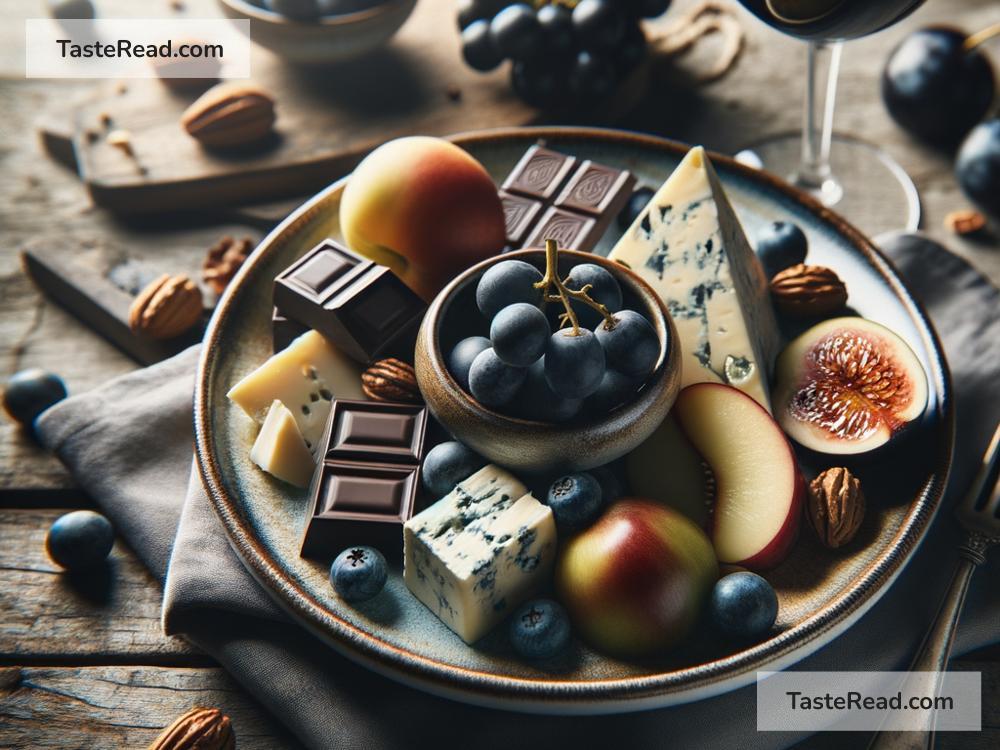The Science of Food Pairing: Unlocking More Flavorful Meals
Ever wondered why some foods just seem to go perfectly together, while others miss the mark? Think about classic pairs like peanut butter and jelly, tomatoes and basil, or coffee and chocolate. They’re not just random combinations—they work well together because of the science of food pairing. Let’s dive into how food pairing works in simple terms, so you can make better choices in the kitchen and create meals that taste amazing.
What Is Food Pairing?
Food pairing is all about combining ingredients in a way that their flavors complement each other. Every food is made up of different compounds—tiny molecules responsible for how things smell and taste. When two ingredients share similar compounds, they often taste good together. Scientists use chemistry and data to study these compounds and figure out which foods make a great match.
For example, chocolate and strawberries share some of the same fruity and floral compounds, which is why they taste so delicious when paired. On the other hand, if foods don’t share these compounds, they might clash or taste strange together.
Why Is Food Pairing Important?
Imagine making a dish that tastes flat, boring, or even unpleasant. The magic of cooking often comes from mixing flavors that bring out the best in each other. Good food pairing can:
- Enhance Flavor: Pairing complementary ingredients makes each one taste better.
- Add Excitement: Creative combinations can surprise you and make meals more interesting.
- Improve Balance: Mixing the right foods creates harmony—like balancing sweet, sour, salty, and bitter flavors.
The Role of Flavor Compounds
Scientists have identified thousands of flavor compounds. Think of them as the building blocks of taste and smell. Some common flavor compounds include:
- Esters: Found in fruits, they add sweet or floral notes.
- Aldehydes: Often found in herbs and greens, adding freshness.
- Sulfur compounds: Found in garlic and onions, creating bold, savory flavors.
When two ingredients share the same compounds, their flavors can complement each other beautifully. For example, coffee and chocolate both contain compounds that add richness and bitterness, which is why they’re a popular pair.
Food Pairing in Action
Let’s look at some examples of food pairing based on science:
-
Cheese and Apples: Cheese contains savory, creamy compounds, while apples are full of sweet and fruity compounds. The creamy texture of cheese balances the crisp tartness of apples.
-
Bacon and Maple Syrup: Bacon has smoky, salty compounds, while maple syrup is sugary with a hint of caramel. Combining salty and sweet creates a delicious contrast.
-
Tomatoes and Basil: Both foods share floral and citrus-like compounds, which make them blend seamlessly in dishes like pasta and salads.
Contrasting vs. Complementary Pairings
Food pairing can follow two main routes: complementary or contrasting.
-
Complementary Pairing: This is when two foods have similar flavors and enhance each other. For example, vanilla and cinnamon have warm, aromatic compounds that match well together.
-
Contrasting Pairing: This is when two foods are very different, but their differences create a pleasant balance. Think of salty potato chips paired with sweet chocolate. The saltiness highlights the sweetness, and vice versa.
Both approaches can work—it’s about finding the right balance.
The Role of Texture and Temperature
Flavor is just one piece of the puzzle. Texture and temperature also play big roles in food pairing:
-
Texture Matching: Creamy foods pair well with crunchy ones (like chocolate mousse and biscotti), adding complexity to the dish.
-
Temperature Balance: Warm and cold contrasts can enhance a dish, like warm pie served with cold ice cream.
These factors add variety and excitement to meals, making food pairing even more interesting.
Practical Food Pairing Tips
You don’t need a food scientist in the kitchen to start experimenting with food pairing. Here are some simple tips:
-
Start with Familiar Pairings: Think of classic combinations like tomato and mozzarella or salted caramel. Build on these ideas to create new dishes.
-
Explore Food Families: Foods in the same “family” of flavor often pair well. For example, citrus fruits like lemons, oranges, and limes go well with herbs like mint and cilantro.
-
Balance Flavors: Too much of one flavor—whether sweet, salty, sour, or bitter—can overwhelm a dish. Pair contrasting flavors to achieve balance.
-
Experiment Slowly: Try small tweaks and see how flavors interact. For example, add a dash of honey to a savory dish, or sprinkle chili flakes onto chocolate.
How Technology Helps
Did you know there are tools available to guide your food-pairing experiments? Apps and databases use science to suggest pairs based on shared flavor compounds. Many professional chefs rely on this kind of technology to plan creative recipes.
The Fun of Exploration
Food pairing isn’t just about science—it’s also about creativity and personal taste. What works for one person might not work for another, so feel free to experiment. Try pairing unexpected ingredients together, and you might just discover your next favorite combination.
The science of food pairing opens up endless possibilities for flavorful and exciting meals. Next time you step into the kitchen, think beyond the recipe. Have fun mixing and matching ingredients to create magic on your plate!


